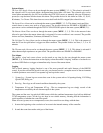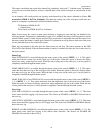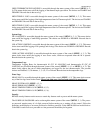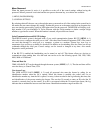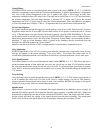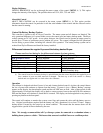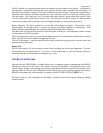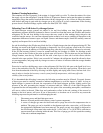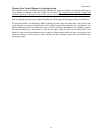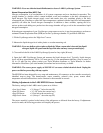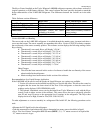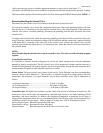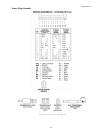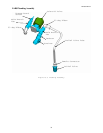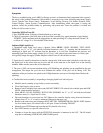TW-357 REV E
33
MAINTENANCE
Strainer Cleaning Instructions
The container will not fill properly if the strainer is clogged with ice or dirt. To clean the strainer, first close
the supply valve to the refrigerator. Vent the fill line of all pressure. Remove and warm the strainer to ambient
temperature. Purge the strainer from both directions with dry nitrogen gas or dry oil-free air. Rinse the strainer
with alcohol and purge it again with dry nitrogen gas or dry oil-free air to clear contaminants. If the cleaning
process doesn’t clear the blockage, replace with a new filter (P/N 7631-1080).
Defrosting Your LAB-Series CryoStorage System
All liquid nitrogen storage systems are subject to ice and frost buildup over time. Regular preventive
maintenance programs should be instituted to remove ice and frost from the sensor and fill tubes and from the
refrigerator lid. Ice and frost buildup in the sensor tube may result in false readings being relayed to the
controller from the sensors. Ice can form a thermal barrier around a level sensor, rendering it insensitive to the
temperature differences between vapor and liquid. Sensors and thermocouples should be carefully removed
regularly and inspected for ice and frost buildup.
Ice and frost buildup in the fill tube may block the flow of liquid nitrogen into the refrigerator during fill. This
blockage can result in the liquid level dropping to dangerously low levels, and may result in the Low Alarm
sensor being activated. In addition, a fill line blockage may cause the Low LN2 Supply Alarm to be activated.
If the fill line becomes blocked, it must be warmed until the ice blockage is cleared. Ice blockage would
typically form in the fill tube at the point at which water will form ice. This location may be just inside the
storage chamber, near the top. Warm the fill line with a hair dryer or other safe low heat source with the
solenoid in the open position. If this is not successful in 2 minutes, the refrigerator should be allowed to thaw
to room temperature, and purge with dry nitrogen to remove all traces of moisture within the storage chamber
before re-filling.
Excessive ice and frost buildup may occur on the refrigerator lid if the lid is left open or the liquid level is too
close to the underside of the lid. To defrost the lid, open the lid to the fully open position. Clean the ice and
frost from the underside of the lid by allowing it to thaw slightly and wiping with a clean, lint-free cloth. Care
must be taken to insulate the inventory control system from high temperatures, which may affect the
viability of the stored product.
If it is determined that defrosting is necessary the following procedure must be followed. Cryogenic freezers
of these types must be carefully warmed to ambient temperatures to avoid the ingress of water. As long as
liquid nitrogen is present in the unit, the evaporation of the liquid nitrogen provides slightly positive gas
pressure in the unit, preventing the entrance of moisture laden air. When all of the liquid nitrogen has
evaporated but the unit temperature is still below the dew point of the surrounding atmosphere, condensation
will start to collect in the unit. When frost and condensation collect in the unit, staining of the carousel or
damage to the level sensors will occur. If one of these units is to be taken out of service for any reason the
following steps must be performed to avoid damaging the unit.
1. Disconnect power and liquid nitrogen source.
2. Remove all stored product and inventory control system components.
3. A source of nitrogen gas must be found and used to purge the unit as the temperature rises to
ambient. The purge gas can be installed on the thermocouple tube, sensor tube, or fill line after
the appropriate components have been removed. The purge gas may also simply be delivered to
the unit through a bent metal tube under the lid. A flow rate of 5 to 10 SCFM is sufficient to
prevent water from collecting inside the unit. This flow of purge gas will also speed the warming
of the unit to ambient temperature.



